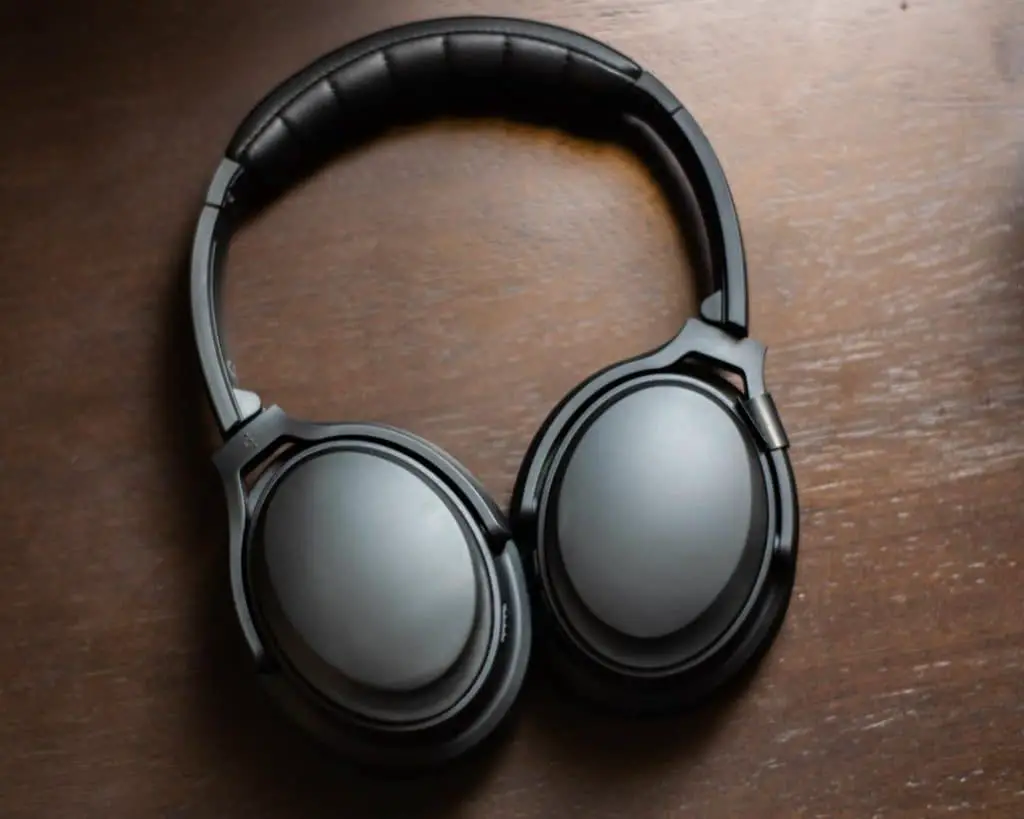Does size matter? The question that seems to trump all questions. I think most of society has come to agree that size doesn’t matter all that much; what’s more important is how you use it. We’re talking about driver size here… don’t get sidetracked (even though it’s true for most other things).
That being said, when comparing a headphone driver to a speaker box driver, the size difference does give considerably better bass. So, does headphone driver size matter when you’re looking to invest in a new set?
While driver size can make a difference, especially in the bass produced, bigger isn’t always better when considering headphones and earbuds. There are many factors that determine the overall sound quality when it comes to headphones, so don’t just consider the driver size when choosing.
So how exactly does driver size affect audio quality? While many manufacturers will flaunt their driver size as a unique selling point (mine’s bigger than yours), a bigger driver and poor-quality padding or other lacking components can really lead to disaster.
When looking at the specs, make sure to compare not only size, but also reviews and make sure you understand the technical side (we’re getting there next), so you make an informed decision.

How Does Driver Size Affect Headphones?
There is obviously some effect of having a bigger driver, but just how much exactly and what are the differences in size. Let’s compare apples with apples.
Your headphones driver size can range from 20mm – 50mm in diameter, while their smaller counterparts, earbuds are around 8mm – 15mm in diameter. The bigger the driver, the more sound it can produce. Headphones need more sound seeing as they sit on the ear, vs earbuds that go in the ear.
Consider this; earbuds don’t need a lot of sound as they’re so close to the ear. What matters is sound quality. So, even though the driver is small, it doesn’t matter much.
Headphones have a lot more capabilities, I mean bass can be cool when you’re pumping away your favorite tunes and headphones with the right driver can do that for you. So, in this case, the driver matters.
But is it really only the size that matters, that magic diameter?
The size of the driver isn’t all that matters. The driver is made up of a number of components, and the quality of each component is important. The driver type, tuning, materials used, as well as the design and build of the headphone casing can significantly affect sound quality.
To put it simply, a smaller driver with higher quality components and overall better headphone design can give much better audio than a lower quality bigger driver alone.
There are also a number of technical specs that can really pack a punch, and none of them have to do with driver size – like frequency response, headphone impedance, sensitivity, and noise-cancellation.
If you end up getting headphones with only big drivers and none of the other important components, you’ll get louder sound but with distortion and scratchiness. Not worth it.

Is a Bigger Headphone Driver Better?
When comparing higher quality headphones, all with the same specs, would a bigger driver be better?
The driver size does have an overall effect on the bass produced. If the speaker diaphragm is bigger, it has more power and produces more sound. The overall sound quality can also be cleaner. This doesn’t mean that a well-designed headphone with a smaller driver can’t produce the same effect.
The misconception is that bigger is better, and the truth is that dynamite comes in small packages (also). While bass might be better with bigger headphone drivers, treble (higher frequencies) can be harder to replicate.
A great example of a small driver that packs a punch is the Apple Airpods. The sound quality in these little guys is really a testament to the fact that size doesn’t always matter.
Apple focussed on higher quality components and exceptional design to deliver quality in it’s smallest possible format.
And, what’s the deal with bass anyway? To be honest, I’d much rather have decent fidelity across the entire range of frequencies than just a distorted bass blaring in my ears.
That’s the risk with only looking at size. You might end up with something that isn’t what you wanted.
As a final thought on what is better, I’ve come to the conclusion that overall sound quality is critical.
Always make sure that you try before you buy. Read reviews and know what to look out for. Secondly, it doesn’t matter if your drivers are big, but the overall quality of the design is poor.
If you want something that’s worthwhile in terms of sound and that’s going to last, make sure you choose a manufacturer that emphasizes quality build and dexterity – especially when it comes to the cable.
If the cable is of poor quality, or poorly secured, the driver won’t be able to compensate.

How Different Headphone Drivers Affect Sound
There are a number of driver types on the market – just to confuse things even further – and each has its own qualities to bring to the table.
Depending on what you want, choosing the right driver type might be more important that size at the end of the day.
■ Dynamic Drivers
▪️ What Are Dynamic Drivers?
As the most common driver on the market, dynamic drivers (or moving-coil drivers) offer relatively good sound quality at a great price.
Using a neodymium magnet, the driver produces a static magnetic field that moves the voice coil and diaphragm, producing sound.
▪️ When to Choose a Dynamic Driver?
If you’re looking for something affordable that has a good bass as well as being able to pick up mids adequately, this driver is for you.
It doesn’t do exceptionally well with high volumes, so if you’re prone to cranking the volume, this might not be the one for you.
■ Balanced Armature Drivers
▪️ What Are Balanced Armature Drivers?
These are the smallest of the lot. Typically found in in-ear monitors (IEMs – not your typical earbuds, they’re used by professionals), they’re used in conjunction with compact transducers.
This driver has two permanent magnets that house a magnetic coil (or armature). As the electric current is applied, the coil attracts or repels the permanent magnets.
This creates vibrations in the diaphragm and eventually sound. It is considered ‘balanced’ when the magnetic coil remains centered between the two magnets.
▪️ When to Choose a Balanced Armature Driver?
Being so small, they really don’t deliver much bass, however, this isn’t what they’ve been designed for.
With the Balanced Armature Driver, it’s all about sound quality and noise-cancellation. They are really good at replicating high-frequency sounds.
When it comes to IEM’s, they’ve actually combined the Balanced Armature Driver with multiple dynamic drivers to offer the full range of audio.
These are ideal for sound technicians who work in noisy environments and still need to be able to pick up subtle sounds.
■ Planar Magnetic Drivers
▪️ What Are Planar Magnetic Drivers?
Probably the most common driver used in quality open-back headphones, Planar Magnetic Drivers (or orthodynamic drivers) make use of a duo of magnets that are positioned across from each other.
There is a fixed membrane between these magnets that is laced with wire. When this membrane receives the electric audio signal, it reacts with the magnets to create movement and sound.
▪️ When to Choose a Planar Magnetic Driver?
These are higher-end drivers and really need an amp to get the full effect. Choose these if you’re looking for exceptional sound quality, setting up a studio, or you already have all of the gadgets, and you’re looking to complete your setup.
There is virtually zero distortion with a Planar Magnetic Driver, even at really high volumes. The bass is phenomenal.
■ Electrostatic Drivers
▪️ What Are Electrostatic Drivers?
A quality high-end driver that’s really going to satisfy the best audiophile out there. You won’t find these in just any old headphones; these are mostly used in studio equipment. They need an amplifier to function, and they’re going to come with a price.
The tech is what makes them special. Between two perforated electrodes or metal plates lies an electrically-charged diaphragm.
The electric audio signal gets sent to the electrodes and electrifies them. This pulls and pushes the diaphragm with such precision that it produces the clearest sound of all the drivers.
▪️ When to Choose an Electrostatic Driver?
If you have a studio and you’d like to take your gear up a notch, this is the driver to look out for. Take note that these aren’t your usual portable headphones, they’re going to stay in the studio. You won’t regret it though, prepare yourself for a sound revolution.

What Is Even More Important than Headphone Driver Size
You’d think that the driver, the brains of the entire operation, would be pretty important, and they are, but there is something that can make or break even the best setup, and that is the tuning.
“What the heck?! What is tuning?’ I hear ya, well tuning is the final adjustment to the driver to suit the enclosure design, and ear padding (two equally critical components to a great sound experience.
Tuning sound is an art in a way. Many manufacturers today use technology to get it just right, and this helps give you that perfect audio experience.
Tuning headphones isn’t something you need to worry about, unless you change something on the headphones, like the earpads, or they get damaged.
■ Where Can Tuning Go Wrong? Well, There Are a Few Possibilities:
- First of all, if you’re buying from an unknown manufacturer, they might not get the acoustics right, balancing the design and sound production.
- Secondly, you could have swapped your earpads and ended up with a totally different sound – because the tuning is now out.
- Finally, if you damage your headphones, let them fall. Perhaps, it could throw out the tuning.
You need to consider the materials that are used in headphones when you look at the specs. Durable, flexible materials won’t break or warp – that can change the tuning.
■ Most Important Aspects to Consider after the Driver Quality:
- Tuning
- Enclosure design
- Ear padding
To give a practical example, I have tried both the Audio-Technica M50X and the M40X.
Both are exceptional, but the M50X comes with a 45mm drivers, while the M40X uses 40mm drivers.
So, how have they managed to keep the sound quality so good on both models? Tuning!!
By tuning each model to fit the design, and by taking into consideration the ear padding, they could give each model a unique quality sound.
I’m not saying the drivers don’t matter, but you don’t have to spend a fortune on drivers to get exceptional quality sound. Just go for quality.

■ What’s Better – 40mm or 50mm Headphone Drivers?
In the end, quality beats quality. If you have a high-quality 40mm driver, it’s going to beat any low-quality 50mm by a landslide. At the end, the sound quality is something you have to be happy with, try out a few headphones before deciding on which one works for you.
In the end, it’s all about the tuning!! Don’t get swept up in fancy sales jargon, just put on the headphones and give it a listen.
If you like it, there’s your ‘best’ driver. If you can’t get to the guitar stores to try them out and you’re hearing is pretty standard, there’s a lot of value in reviews. Check out what other people are saying and make a judgement based on that.

Which Headphone Driver Size Should You Buy?
Your idea of what is good audio and what you’ll use your headphones for is really going to determine what driver you should use.
Headphone drivers are between 20 – 50mm in diameter. While there isn’t an ideal driver size and bigger isn’t better, if you compare the audio quality of two similar high-end headphones, 45mm is a good average. This gives a good bass/sub-bass and stronger sound waves. Choose quality over size.
Buying headphones based on driver size could lead to trouble. In the end, you need to consider the entire product and, if possible, test it out to know if it can deliver.
While the size of the driver could help you pump up the sound, if the quality is poor, you’re just going to hear a distorted sound.
Driver type does make a difference, but often the price tag attached to a better driver is substantially higher. It can be justified if you have a studio for recording podcasts or music.
The perfect driver for you is going to be the driver that delivers the quality audio you need, at the right price.
■ As a Final Thought
What to consider when looking at the driver size of new headphones:
- Online reviews
- Other technical specifications
- Brand
- Design
If possible, try to compare a few headphones personally, so you can get an idea of the sound quality.
Try the same brand with two different drivers to see if you can notice a difference. If you can, go for the bigger driver – if your ears are that good, anything less is going to drive you nuts.
If you can’t, make your decision based on which design is the most comfortable and suits your budget. In the end, you’ll be using them daily, and you need to consider a lot more than just the driver size.

